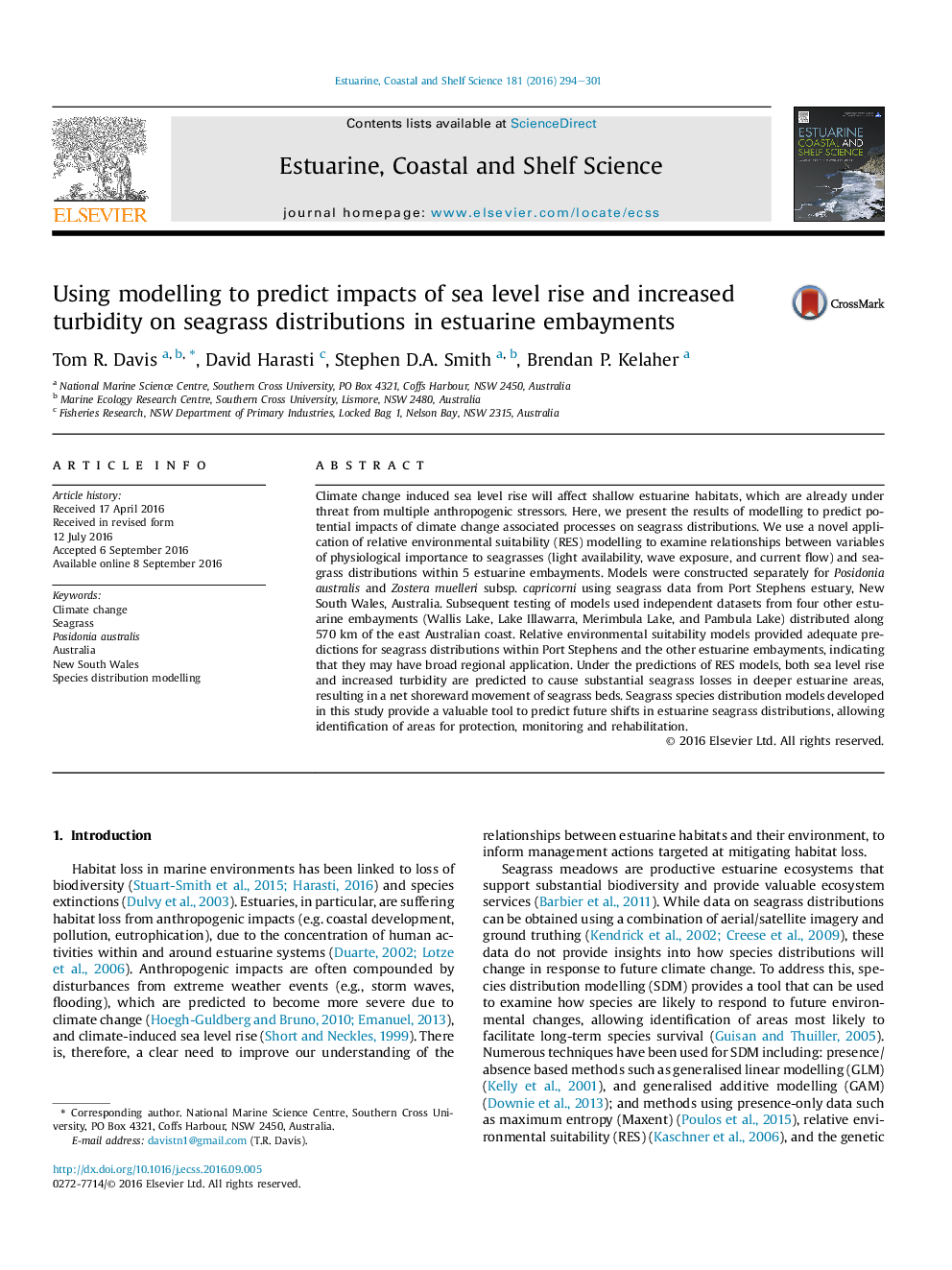| کد مقاله | کد نشریه | سال انتشار | مقاله انگلیسی | نسخه تمام متن |
|---|---|---|---|---|
| 4539148 | 1626618 | 2016 | 8 صفحه PDF | دانلود رایگان |
• Seagrass distributions were modelled within five estuarine embayments.
• Seagrasses were influenced by light availability, wave exposure, and currents.
• Sea level rise and increased turbidity may cause seagrass loss in deeper areas.
• Sea level rise creates new shallow areas for seagrass colonisation.
Climate change induced sea level rise will affect shallow estuarine habitats, which are already under threat from multiple anthropogenic stressors. Here, we present the results of modelling to predict potential impacts of climate change associated processes on seagrass distributions. We use a novel application of relative environmental suitability (RES) modelling to examine relationships between variables of physiological importance to seagrasses (light availability, wave exposure, and current flow) and seagrass distributions within 5 estuarine embayments. Models were constructed separately for Posidonia australis and Zostera muelleri subsp. capricorni using seagrass data from Port Stephens estuary, New South Wales, Australia. Subsequent testing of models used independent datasets from four other estuarine embayments (Wallis Lake, Lake Illawarra, Merimbula Lake, and Pambula Lake) distributed along 570 km of the east Australian coast. Relative environmental suitability models provided adequate predictions for seagrass distributions within Port Stephens and the other estuarine embayments, indicating that they may have broad regional application. Under the predictions of RES models, both sea level rise and increased turbidity are predicted to cause substantial seagrass losses in deeper estuarine areas, resulting in a net shoreward movement of seagrass beds. Seagrass species distribution models developed in this study provide a valuable tool to predict future shifts in estuarine seagrass distributions, allowing identification of areas for protection, monitoring and rehabilitation.
Journal: Estuarine, Coastal and Shelf Science - Volume 181, 5 November 2016, Pages 294–301
